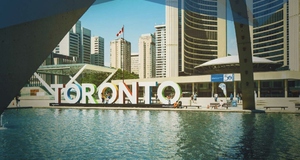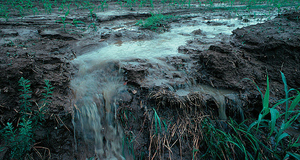From Earth Common Journal VOL. 4 NO. 1The Right and the Good: Communicating Environmental IssuesAssessing Right and GoodAccording to Richard T. Nolan and Frank G. Kirkpatrick, philosophers and authors of Living Issues in Ethics (2000), the difference between various countries used to be basic ideas, ideals, and loyalties. Today there is disparity in technology, or in science, or even in general education (Nolan & Kirkpatrick, 2000, p. 5). Society has immense power over nature. Space and time have been reshaped. We have more mobility and experience increased cross-racial encounters. International interconnection seems boundless in our ubiquitous virtual world. To make a Right or Good decision, an individual must have some idea of what he or she values. Ongoing cultural exchanges affect what is considered valuable. Increased power, cultural interaction, and greater populations affect consequences. Lahart et al., (2008) state that rising populations are more prosperous. Not only do people consume more because the number of people on earth has increased, but also people from previous have-not countries want what the “have” countries enjoy. If resource demand surpasses supply, prices climb and economic growth suffers. Violence could follow (Lahart et al., 2008, para. 4-5). An aspect of the intermingling of cultures is that finding consensus about what constitutes the rules and regulations to make a Right decision could be more difficult. Values can differ between cultures. Lahart, Barta, and Batson (2008) quote Bjorn Lomborg, a Danish statistician who argues that the global-warming problem is overblown, to show the flip side of their argument. He suggests that constraints might disappear with greater global cooperation. Lomborg’s argument is similar to more heads equal more possibilities. New seed varieties and better irrigation techniques, could open up arid regions to cultivation; technological breakthroughs, like cheaper desalination or efficient electricity transmission from unpopulated sunlit or windy locals would be solutions (Lahart et al., 2008, para. 11). Lomborg’s argument does not include resources that are not replaceable such as water. He also does not consider the pollution created with either use or misuse of resources. No mention is made of changes to our ecosystems. Increasing desalination, for example, result in less ocean and more salt piles. In our environmental system, altering part modifies the whole. As part of a system, we are also transformed through interaction. We only need look at the effects of disease to see our vulnerability. In a story discussing diseases and what travellers should be aware of, the CBC article, titled Guinea’s Ebola outbreak: There are far worse diseases out there, refers to statistics from the World Health Organization (WHO) to describe a number of very dangerous threats (March 26, 2014; CBC News). Tuberculosis is an airborne disease that killed 1.3 million in 2012, even though there is a vaccination available against the bacteria. Food and water borne diseases such as E. Coli (traveller’s diarrhea) is left for the host to live through. Antibiotics only reduce the effects of diarrhea. Hepatitis, which can be prevented with a vaccination, continues to cause liver damage in extreme cases. Typhoid infection causes severe stomach cramps, internal hemorrhaging, and in some extreme cases fits of delirium. A closer look at Cholera, which continues to kill 100,000 to 120,000 yearly, disavows any sense of either superiority or control to which humans attest (March 26, 2014; CBC News). Cholera bacteria play an integral part in the propagation of crustaceans that feed on Algal blooms (rapid increases in the population of algae, which are photosynthetic organisms in an aquatic system that provide much of Earth’s oxygen). Blooms form during the Monsoons in the semi-enclosed bodies of water where fresh water from rivers or streams mingles with the salt water of the ocean (estuaries) (Despommier & Chen, 2004). The bacteria (Cholera) that are beneficial to the health of the estuary can be deadly to people if it gets into a human gut (Despommier & Chen, 2004). Not only did sailing ships act as carriers to spread the bacteria world-wide, but also investigations, which took hundreds of years, led to new understanding of just how little humans know of interactions with ecosystems. People’s lack of knowledge can be dangerous. Recent issues indicate how making Good decisions without fully understanding consequences can cause irreparable damage (Despommier & Chen, 2004, See Sidebar also – Our Ecological Connections). Recent Issues“Frequently,” writes Nolan and Kirkpatrick (2000) in an article titled Living Issues in Ethics, “poor evaluations expressed informally reflect primarily other criteria that are, at best, of secondary significance” (pp. 16-17). Good decisions benefit a few for the short term. Right decisions reflect a wide range of convictions and benefit all for the long term. People need not look far for evidence of Good decisions allowing excesses when Right decisions are more beneficial. Tailings Ponds in North East AlbertaTailings Ponds, according to industry, are “left over material produced during the extraction process that separates bitumen from the oil sand” (“Tailings Management, Suncor”). On Suncor’s web site discussing tailings management, tailings ponds’ contents are described as materials that are a necessary part of mining in the Oil Sands (“Tailings Management, Suncor”). The Pembina Institute (a Non-Governmental Organization – NGO – that uses research, advocacy and consulting as tools towards leading Canada’s transition to a clean energy future), describe the same tailings ponds contents as toxic chemicals. The Pembina Institute goes on to list the contents: naphthenic acids (a significant contaminant with largely unknown environmental effects), polycyclic aromatic hydrocarbons, phenolic compounds, ammonia, mercury and other trace metals as well as 75 toxic materials with aggregate amounts of Arsenic, Benzene, Lead, Mercury, and Toluene. From 2006 to 2010, the total amount of mercury added to all tailings ponds per year increased by 80%, led by 50%, and arsenic by 21% (Tailings, The Pembina Institute). Because Tailing Ponds contain such toxic wastes, and because they are a legitimate by-product of mining the oil sands, the government brought together all parties to hammer out rules and regulations by which the ponds shall be managed. These rules make it possible for Right decisions to be made. Once established, the Energy Resources Conservation Board (ERCB) was put in charge to oversee that the rules are followed by industry. This is stated on a page published online by the Canadian Association of Petroleum Producers (CAPP) who are the voice of Canada's upstream oil, oil sands, and natural gas industry (Tailing Ponds, CAPP, Environment and Community, Sidebar Government Relations). The CAPP page side bar states: “In Alberta, the Energy Resources Conservation Board (ERCB) holds the government’s authority for establishing the criteria for managing oil sands tailings, as well as enforcement actions if tailings performance targets are not met” (Tailing Ponds, CAPP, Environment and Community, Sidebar Government Relations). This means ERCB enforces the regulations and ensures Right decisions are made. Right decisions maintain a balance between economy, environment, and energy supply. An article published on line in HazMat magazine discusses an application to the ERCB to review and rescind approval of tailings management plans for Syncrude's Mildred Lake and Aurora North oil sands projects. The plans submitted by Syncrude did not comply with the requirements of the ERCB's Directive 074: Tailings Performance Criteria and Requirements for Oil Sands Mining Schemes (Dec 13, 2010; “Alberta not enforcing tailings pond regulations”, para. 3). The ERCB, like the Police, enforce laws. But, the ERCB has an added duty of making Right decisions concerning changes to laws. The ERCB explains its reason for exempting oil sands operators from meeting its regulatory standards in the following way, “[I]mposition of the tailings management requirements may have significant impacts to existing and prospective oil sands mining operations” (Dec 13, 2010; “Alberta not enforcing tailings pond regulations,” para. 4). The ERCB made a Good decision. Their decision meets the short-term goal of a single stakeholder. The article goes on to quote Barry Robinson, Ecojustice staff lawyer: “There is little point in having tailings management regulations if they are not going to be acted upon and enforced” (“Alberta not enforcing tailings pond regulations”, Dec 13, 2010 1:45 pm, para. 11). Good decisions alienate and frustrate other stakeholders and lead to mistrust. Rules and regulations are developed, because humans live in groups and require organization and regulations that help people get along within society. Original compromises, communications, and care taken to develop rules and regulations are dismissed. Trust is lost. Other environmental concerns are international in scope.Continued on Next Page » Suggested Reading from Inquiries Journal
Inquiries Journal provides undergraduate and graduate students around the world a platform for the wide dissemination of academic work over a range of core disciplines. Representing the work of students from hundreds of institutions around the globe, Inquiries Journal's large database of academic articles is completely free. Learn more | Blog | Submit Latest in Environmental Studies |

















